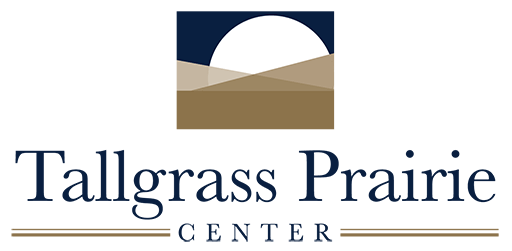Appendix 4A: Sample Seed Request Form for Native Seed
Table of Contents
SAMPLE
(Note: This is provided to show what is generally included in the seed request form. The form has minor changes (e.g., due dates) each year. Therefore, this form is only intended as a sample. Please do not fill out and submit this version of the form. The forms to be filled out and submitted will be emailed to roadside managers each year by the Tallgrass Prairie Center roadside program manager.)
To be picked up at the Tallgrass Prairie Center in spring/early summer 2025
An approved IRVM plan must be on file with the Iowa DOT
in order to request seed.
Check with Tara Van Waus, Living Roadway Trust Fund coordinator, if you are unsure if your county or city has an IRVM plan. tara.vanwaus@iowadot.us 515-239-1768
Please submit the completed form to Kristine Nemec at: kristine.nemec@uni.edu or UNI Roadside Program, 2412 W. 27th St., Cedar Falls, IA 50614 no later than October 18, 2024.
County or City: _____________________________
Name:________________________________
Email address:_____________________
Phone number:___________________________
Signature:_________________________________
Date:____________________
Acres of seed requested (either 2.5 acres or in 10-acre increments, e.g. 10, 20, 30, etc. acres. Please no 5, 15, 25, 35, etc. acres). This seed is only to be used within county or city rights-of-way. All seed picked up in 2025 must be planted no later than December 31, 2026.
______ Acres of cleanout mix (around 20 native grass, forb, and sedge species)
______ Acres of diversity mix (around 35-38 native grass, forb, and sedge species)
Check all methods you will be using to plant the seed:
______ Hydroseeding
______ Hand broadcast seeding
______ Broadcast seeding with equipment that will not cause rutting
______ * Broadcast seeding with heavy equipment such as a tractor that may cause rutting
______ * Drilling
*If you are planning to drill, or use heavy equipment such as a tractor that may cause rutting more than 6 inches to broadcast seed for any of the 2025 seed that you will receive, note the requirement for ensuring cultural resources compliance. The locations for seed that will be drilled or seeded using heavy equipment between when you pick it up next spring and December 31, 2026 are also due by October 18, 2024 as described below. If you are hydroseeding, mechanically broadcast seeding using equipment that will not rut, or hand broadcast seeding all of the seed, you only need to report the number of acres of seed you would like, you do not have to report seeding locations.
Because the seed is acquired through a federal grant through the Federal Highway Administration, every year IDOT reviews the grant on behalf of FHWA to ensure it meets federal environmental and cultural regulations. Even if the roadside construction/maintenance project did not involve federal funds, the planting of the seed is subject to federal review. Through this process seeding locations need to be provided for review. Per the National Historic Preservation Act, the Iowa State Historic Preservation Officer and other consulting parties (Native American Tribes/Nations) are allowed to review and comment on these undertakings regarding the presence or treatment of historic properties. Our focus is to ensure drill seeding and equipment does not disturb burial locations. Please submit your drilling and heavy equipment locations to me in the format below and the tribes will review it. Do your best to anticipate the locations of any construction projects that you will drill or use heavy equipment on by the end of 2026, erring on the side of including a bit more than the area anticipated to be safe.
Google Earth files (.kmz) are required. For those who may be unfamiliar there is very good instruction on the internet and YouTube on how to create polygons in Google Earth. Truly, Google Earth is easy to use and really helps expedite this process.
create a polygon for each drill seed location, or where heavy equipment will be used (points or pins are insufficient)
label the polygon with name of the road used on Google Earth (if there is more than one, use sequential numbering, Casper Ave 1, Casper Ave 2, etc.);
make each polygon slightly larger than will be needed (general rule of thumb is 100 feet in each direction)
each county needs to complete the attached table (very basic – one table per county)
It is important to comply with this request to be good stewards of cultural resources and follow state and federal laws. Although the entire ROW is often assumed to be disturbed, there are recorded burial sites in the roadside located in various counties around the state. Archaeologists and contractors find unrecorded burial sites regularly. It is critical that you avoid unintentionally uncovering or disturbing a burial site during a road project not only for the bad publicity for the county but to avoid jeopardizing receipt of Transportation Alternatives Program funds by the Iowa IRVM program in the future.
In the long-term, your county may benefit from having a desktop cultural resources study done by a consultant. A consultant can review records and provide the county an inventory of burial locations within and near the ROW. Certain county employees then have internal access to proactively check for burial sites before any roadside project, whereby being able to avoid these locations in the future and streamline the seeding review. Contact Brennan Dolan, IDOT cultural resources manager/archaeologist, at brennan.dolan@dot.iowa.gov or 515-239-1795 for more information on consultants who can conduct a study. There may be a cost savings for neighboring counties to join together to have a desktop study done for their counties.


